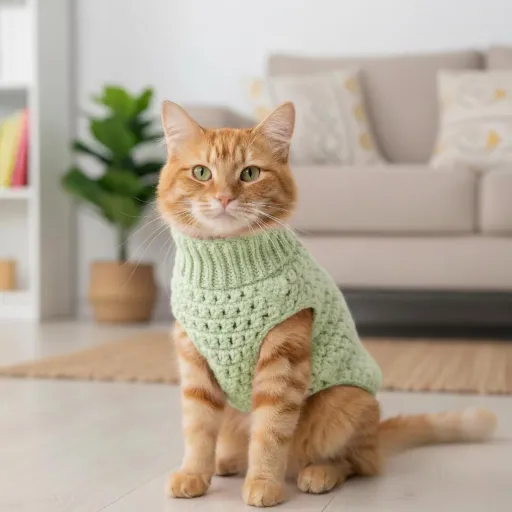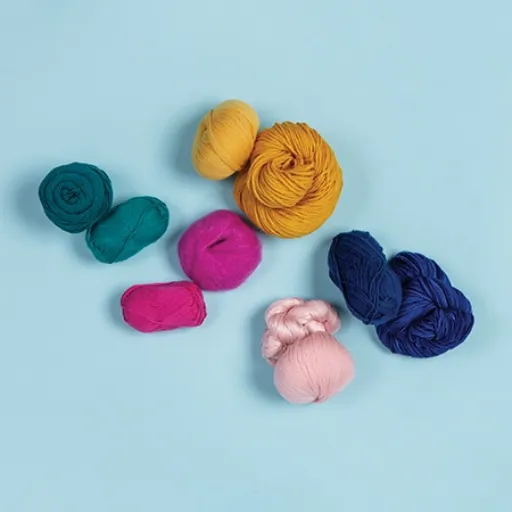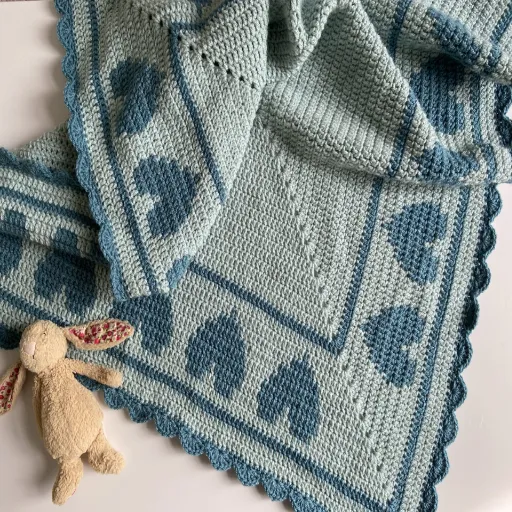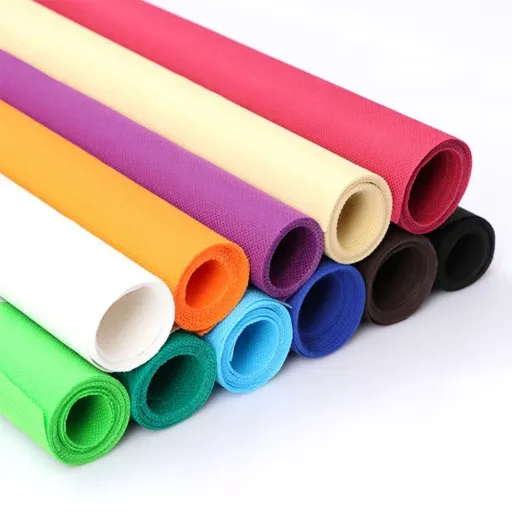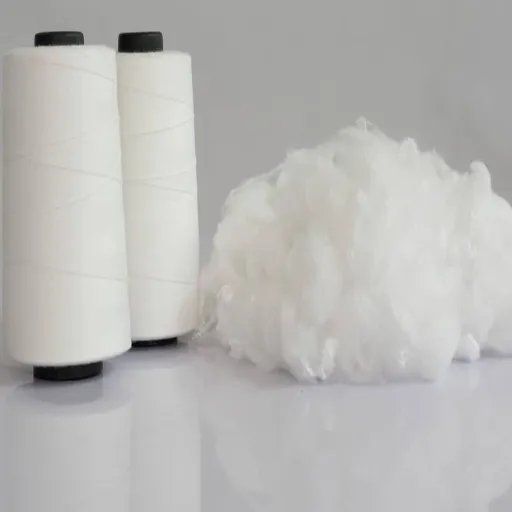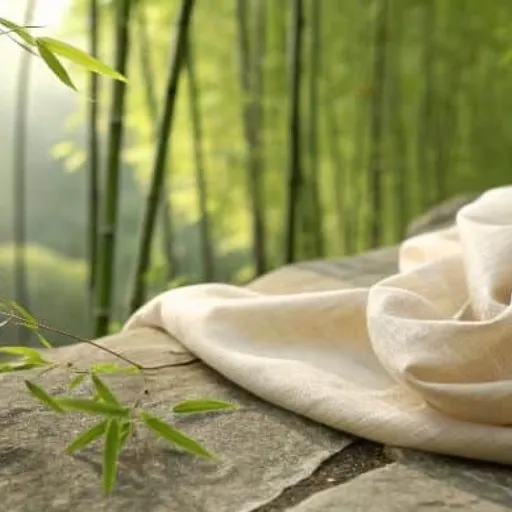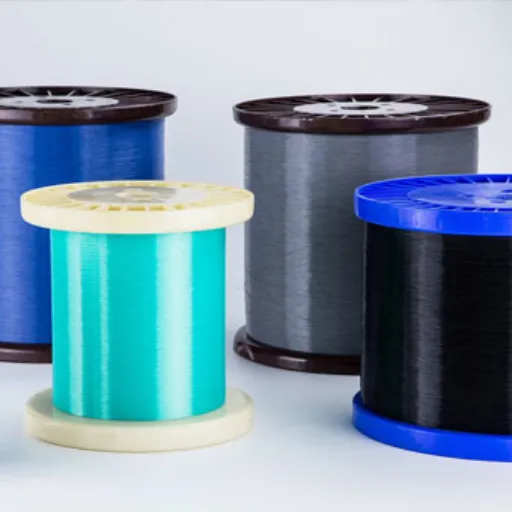All-season and environmentally friendly, bamboo viscose has been garnering popularity in recent times. So, what exactly is bamboo viscose, and what sets it apart from other fabrics? This comprehensive guide penetrates the realm of viscose fabric, largely focusing on bamboo viscose to understand its special features and benefits, and possibly its applications in different fields. Whether you’re in the know about sustainable fabrics, a designer interested in eco-friendly fabrics, or just an inquisitive consumer of new-age fabrics, this article will give you the clarity and knowledge on why bamboo viscose is becoming a household name in fashion and beyond. From its ultra-soft feel to its green roots, uncover how this fabric is an excellent amalgamation of good times, style, and sustainability.
Understanding Viscose
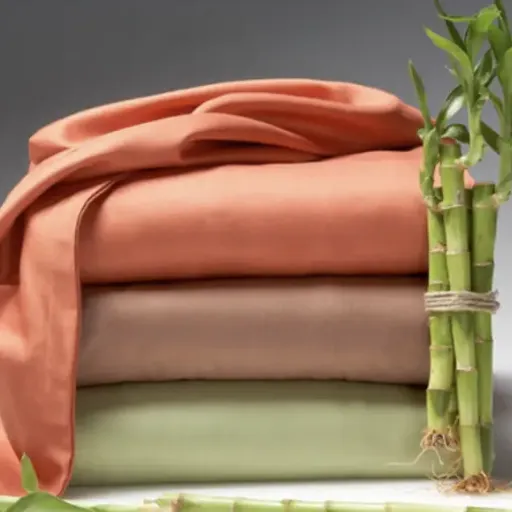
Composition of Viscose: What is It?
Viscose, or rayon, is a type of semi-synthetic fabric made from cellulose, a natural polymer derived from plant material such as wood pulp. The most common raw material used is timber, coming from eucalyptus, beech, or spruce trees, while in some cases bamboo serves as the raw material. The next stage is chemical treatment of the cellulose so it becomes a pulpy solution that will be turned into fiber and spun into thread or cloth.
The production of viscose is achieved using both natural and chemical means. Once harvested, the plant raw materials got to have the cellulose extracted and purified. It is then treated with sodium hydroxide to produce an alkali cellulose which is further reacted with carbon disulfide to yield the viscous solution, hence the name viscose. This solution is forced through fine holes in a process known as wet spinning, whereby the fibers of regenerated cellulose solidify in a chemical bath.
Though it is sourced from a natural one, the chemical-intensive manner of producing viscose poses an environmental issue. However, newer manufacturing technologies coupled with the willingness of manufacturers to look into greener production processes are beginning to show promise. Yet for all these barriers, viscose is a commonly used textile for occasions spanning from fashion due to its versatility, softness, and low price.
The Origin of Cellulose Fiber
Cellulose fibers have a plant basis, mainly coming from wood pulp or cotton systems. These materials offer a sustainable and renewable source as plants synthesize cellulose-the major structural material of their cell walls. Thus, the entire extraction process starts with the secondary processing of raw plant matter to release cellulose, which is then further processed into usable fiber through several methods.
Production of cellulose fiber can be either mechanical or chemical production, depending on the end use. For example, rayon and viscose fibers are spun from threads or fabrics prepared by dissolution of cellulose in chemicals. Whereas lyocell employs more modern processes to greatly mitigate environmental impact by emphasizing closed-loop systems for the recycling of both water and solvent during the production process.
Cellulose fibers are favored in textiles for breathability, softness, and reasonably good blending capabilities with other fiber materials. They are also biodegradable and made from renewable resources, thus appearing as a greener choice against the synthetic fibers; however, in opting out of certain processes, they face hurdles. It is only the acceptance of those greener processes that can facilitate this change.
Approaches to Distinguished Viscose from Other Fabrics
Viscose differs from other fabrics mainly in the ingredients and the process involved in making it. Unlike synthetics such as polyester that derive from petrochemicals, viscose indeed is cellulose-based and typically uses wood pulp as the main source of its cellulose. Hence, this distinguishes it with some of the natural properties of fibers, such as being soft and breathable, while also presenting versatility usually associated with synthetics.
One major difference between viscose and other natural fabrics such as cotton or wool is that it has a delicate structure and care requirements. Cotton can withstand heavy washing at a high temperature, but by contrast, viscose is more fragile; it shrinks, loses its shape, or damages itself if it gets wet or heated down excessively. That said, viscose is not a good cloth for heavy daily use if one values durability or low-maintenance care.
Secondly, chemical processing differentiates viscose production process from natural ones. Although the chemicals help in producing viscose’s smooth texture and brightly colored outward appearance, they pose the disadvantages of environmental pollution. On the other hand, fabrics of organic cotton or hemp are considered as more environmentally friendly alternatives, as their cultivation and production usually demand fewer resources and produce less waste.
Bamboo Viscose: A Sustainable Alternative
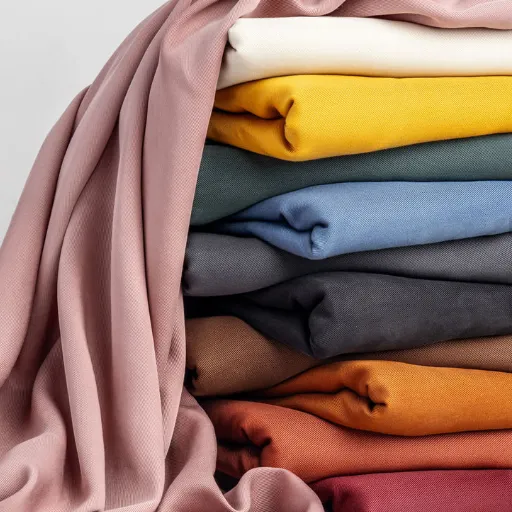
What Is Bamboo Viscose?
Bamboo viscose, AKA bamboo rayon, is a fabric made out of bamboo plants through a chemical industrial process. Cellulose is extracted from bamboo, and then it is treated and dissolved by being spun into fibers for a very soft, smooth, and versatile fabric. It is used widely for clothing and bed linen and for some other textile applications, as it is lightweight and breathable.
One of the reasons that bamboo viscose is perceived to be green is due to bamboo being truly fast-growing, requiring no pesticides/chemicals and very little water. In addition, bamboo plantations absorb vast amounts of carbon dioxide and prevent soil erosion, hence ranking it among the most sustainable raw materials available. However, the environmental friendliness of bamboo viscose hinges mostly on how it is made. In other words, while bamboo is recognized as a benign, environmentally friendly resource, the bamboo viscose process, being that of regular viscose, uses harsh chemicals, so concerns about pollution and worker safety arise.
A few challenges like these are addressed using advanced manufacturing practices with the likes of closed-loop systems, working toward sustainable bamboo viscose. It seeks to recycle and reuse chemicals in order to lessen adverse impact on the environment. In short, when made correctly, bamboo viscose can serve as a sustainable and comfortable alternative to competing fabrics that off-the-balance eco-friendliness and functionality.
Benefits of Bamboo Viscose Fabric
The bamboo viscose cloth is famous for being extraordinarily soft and comfortable to wear. Smooth to touch, it is usually viewed as an alternative to silk fabrics. Individuals with sensitive skin or allergies find bamboo viscose fabrics suitable for them because of these very qualities. This advantage improves the wearability factor of bamboo viscose garments so much that they are considered one of the better options available in the market.
Another great advantage of bamboo viscose cloth is in its breathability. Since bamboo viscose naturally allows air to permeate its texture, this option is best considered in warm weather to keep one cool. Bamboo also absorbs moisture so that the powder of bamboo fabrics can help reduce odor formation; therefore, making it good for use as activewear, undergarments, or bedding. Bamboo offers comfort and functionality to keep everyone satisfied on the array of uses.
If bamboo viscose is produced sustainably, this fabric is also environmentally friendly. The bamboo plant requires very little water, grows quickly without pesticides, and actually improves soil health. With the right manufacturing approach, bamboo viscose fabric brings an environmentally friendly alternative to synthetic textiles and reduces environmental consequences while offering good quality and durability.
Environmental Impact of Bamboo Viscose
Bamboo viscose does have a serious potential to lessen environmental impact if produced responsibly. Bamboo does grow at an extremely fast rate, requiring less water and able to grow without pesticides, providing it an edge over conventional raw materials such as cotton to obtain a more sustainable raw material. Bamboo absorbs huge amounts of carbon dioxide and helps improve the soil quality, which adds to the eco benefits of bamboo.
Environmental effects of the bamboo viscose system are, hence, highly dependent upon the manufacturing procedure. The main avenue of bamboo viscose production comprises chemical treatments with the possibility of toxic wastes entering the environment if they are not treated properly. The chemicals include sodium hydroxide and carbon disulfide. If there are no safeguards or processes to dispose of dangerous wastes, these chemicals will appear as dangers both to the ecosystem and the workers. Sustainable, minimization-oriented methods should be employed to work against these effects; for instance, the use of closed-loop processes which recycle the chemicals.
Hence, for bamboo viscose to be truly eco-friendly, transparency of production and sustainable certification of the practices employed are key. This means products that have the highest level of environmental and ethical certification, e.g., OEKO-TEX, FSC. All in all, while bamboo viscose is a promising material for ecological consciousness, in reality, depending on responsible sourcing and manufacturing practices, it can go either way.
Properties of Viscose Fabric
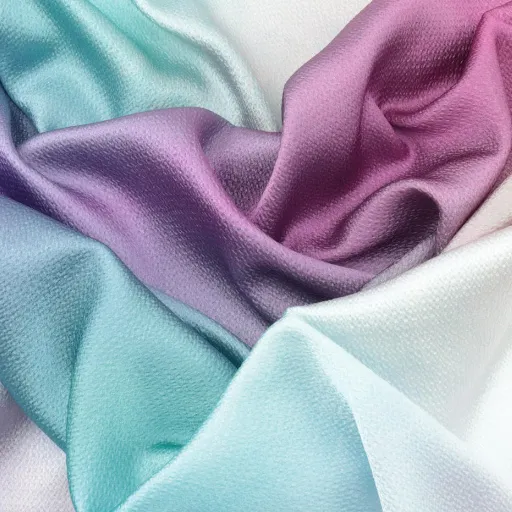
Characteristics of Viscose
The fabric of viscose is versatile and widely used with a silk-like texture and soft feel. It is light in weight and breathable, making it comfortable to wear in any climate and good for summer wears. Its smooth surface gives a shiny effect, attractive for casual and formal wear.
Another characteristic of viscose is its ability to gracefully drape. This attracted the use of viscose in gowns, blouses, and skirts that flow. Viscose is also very good with dyeing, which means good color retention and very brilliant colors. This further increases its versatility in fashion and design with broader options for customization and visual appeal.
However, viscose also brings some disadvantages that deserve an explanation. Viscose wrinkles easily, thereby losing its strength when wet, thus casting it away for long-lasting wear unless taken good care of. Also, in the production of viscose, it keeps a very soft feel to the fabric but has an impact on this earth and can be resource-intense unless sources properly. Therefore, it is in the best interest of the planet if the fabric is cared for properly and if sustainable practices are used during manufacturing to reap the benefits.
Breathability and Comfort of Viscose Fabrics
Viscose fabrics are highly regarded for their exceptional breathability, making them a popular choice for warm climates and summer clothing. The fiber’s lightweight and semi-synthetic nature allow air to pass through easily, helping the body stay cool and comfortable. This quality makes viscose a great material for activewear, dresses, and other garments designed for extended use in hot and humid conditions.
Comfort is another key strength of viscose fabrics. The material is soft to the touch, closely mimicking the luxury feel of natural fibers like silk. Its smooth texture reduces irritation on the skin, making it ideal for sensitive skin or layered clothing. Additionally, the fabric’s ability to drape elegantly without clinging further enhances its comfort and aesthetic appeal.
However, while viscose excels in breathability and comfort, proper care is crucial to maintaining its qualities. The fabric is prone to losing strength when wet and can wrinkle easily, which may affect its longevity. To ensure optimal performance and durability, gentle washing and air drying are recommended. By handling it with care, wearers can fully enjoy the benefits of viscose fabrics while promoting sustainable usage.
Viscose vs. Silk vs. Polyester Comparison
| Property | Viscose | Silk | Polyester |
|---|---|---|---|
| Origin | Semi-synthetic (cellulose) | Natural (silkworm protein) | Synthetic (petroleum) |
| Texture | Soft, smooth | Luxurious, smooth | Varies, can feel artificial |
| Durability | Moderate (weak when wet) | High (with proper care) | Very High |
| Breathability | Excellent | Good | Poor |
| Cost | Affordable | Expensive | Very Affordable |
Selection among viscose, silk, and polyester largely falls on usage and personal preferences. Silk appeals to premium quality and natural elegance, polyester to durability and little maintenance. Viscose is in the middle, offering softness and less price at myriad usages. Each has its own benefits and strength, so an informed choice ensures the right one for a given occasion.
Manufacturing Processes of Viscose
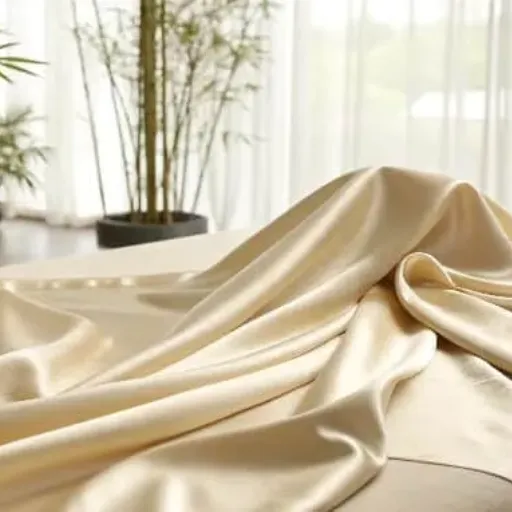
From Raw Material to Fabric: The Viscose Process
In times past, cellulosic fiber extraction was done manually from different natural sources like wood pulp, or from plucking cotton fibers via brute manual force. This substance is then treated chemically preferably with caustic soda to pry apart its natural interlinked structure to make material known as alkali cellulose. This alkali cellulose is one of the precursors from which viscose is made.
Once the alkali cellulose is prepared, aging follows, and then it is treated with carbon disulphide to obtain cellulose xanthate, which is dissolved in a dilute solution of sodium hydroxide to form viscose, a honey-thick liquid. The viscose is filtered to eliminate impurities so that fiber formation proceeds smoothly.
The viscose solution gets extruded through spinnerets into a warm chemical bath, solidifying the viscose into thin threads or filaments. Such fibers are woven into fabric or find other uses, hence allowing for versatility and wide applications in the textile trade. This process represents a perfect equilibrium between science and craftsmanship in fabric making-a soft, tough, and cheap one.
Conventional Viscose vs. Sustainable Viscose
The methods of production and the impact on the environment are quite different between conventional and sustainable viscose. Conventional viscose production has frequently come in for criticism due to the resource-intensive procedures it employs involving the use of chemicals that are highly inconsistent to worker safety, for example, carbon disulfide. The method of gathering of raw materials, like wood pulp for conventional viscose, when improperly handled, would result in deforestation and the destruction of habitats.
Giving priority to a cricle of environmental issues, setting green standards for its methods, sustainable viscose production usually uses raw materials that are responsibly sourced and certified by third parties. These raw materials can be harvested either from managed forests or from alternative sources such as bamboo for a great reduction in deforestation. Additionally, processes of manufacturing sustainable viscose tend to be environmentally friendly and encourage the use of less chemical materials and recycling of water and by-products to lessen the environmental footprint.
Truly, the shift toward sustainable viscose stands for the textile industry’s growing value of functionality versus environmental responsibility. Despite the price tag, sustainable choices give the much-needed scrutiny and answer to the grave eco-environmental dilemma posed by the conventional forms of viscose production. Thus, opting for sustainable viscose gets the consumer and manufacturer alike working toward healthier planet-friendly solutions.
Challenges in Viscose Production
There are numerous challenges to the production of viscose, with the main ones relating to resource depletion and environmental degradation. The use of poisonous chemicals, such as carbon disulfide, in conventional viscose production poses health hazards to the workers and causes pollution in the environment. Besides, contamination of nearby ecosystems happens through the effluent release operations, with negative consequences on biodiversity and water quality.
The other big issue is in the raw material supply. Viscose comes from cellulose, which usually comes from wood pulp, with the possible threat of deforestation if not sustainably sourced. Unsustainable logging practices cause habitat destruction, loss to biodiversity, and enhancement of carbon emissions. These challenges point toward the need for better forest management policies and more stringent rules on sustenance in raw material sourcing.
Thirdly, the production of viscose consumes so much energy and water resources that the entire operation wastes environmental resources. Many plants are operating in regions that are deficient in wastewater treatment systems or renewable energy configuration, which further compounds the problem. To combat the problem, the industry should embrace cleaner technologies, regulation enforcement, and the adherence of the supply chain to sustainable practices.
Purchasing and Caring for Viscose Fabrics
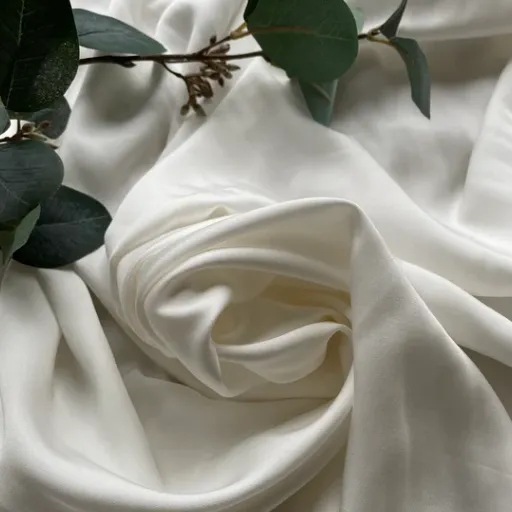
Tips for Purchasing Viscose Fabrics
- Check for Sustainability Certifications: Any purchase of viscose fabrics will require these certifications, which guarantee that the material has been made with due consideration for sustainable methods. FSC or OEKO-TEX certifications will mean that the fibers have been sourced legitimately and processed with minimum environmental impact. This will help assure that the producers apply strict environmental and ethical standards.
- Assess the Fabric Quality: Check texture, weave, and durability before purchasing. Good-quality viscose fabrics should feel smooth, soft, and a bit silky; stay away from fabrics that look too thin or hard and seem that they would wear out in no time, avoiding materials that also might be prone to pilling. Proper dyeing is likewise important: bright colors with an even finish are a good sign.
- Consider Life Span and Use: Select viscose fabrics designed for your individual use and include care requirements in the consideration. Some types of viscose may shrink or lose their shape in the wash, so consider the labels for care instructions. If you want something that doesn’t require much care, just keep an eye out for a blend of viscose with sturdier fibers, as this may be the best choice for daily use.
How to Care for Viscose Fabric
The caring for viscose fabric requires tender loving attention to maintain its looks and longevity. Since it remains very delicate when wet and prone to sudden damages, give it the best hand wash practice with cold to lukewarm water. Use mild detergent and stay gentle with the rubbing of the fabric. Do not wring or twist the fabric as it can change the shape. Viscose can also be laundered in a machine so on a delicate wash if the need arises, and it will surely benefit if one uses a fine mesh laundry bag.
Drying is the other most important point in caring for viscose. Don’t put it in the tumble dryer, as the heat can accelerate the breakdown of the fibers. Spread the garment on a clean towel and gently reshaped to avoid stretching during drying. Dry it in an environment with natural ventilation, away from direct exposure to the sun, as it will cause fading and further weaken the fabric. Do not hang viscose when it is wet since it will lose shape by stretching.
Always use the lowest temperature setting and the fabric should be somewhat damp when ironing viscose to avoid scorching or other irreversible damage. Use a pressing cloth between the iron and fabric for extra caution. The above instructions will preserve the softness, shine, and durability of the viscose garment or textile.
Common Misconceptions About Viscose
One of the numerous misconceptions about viscose is that it is totally synthetic in the way polyester or nylon would be. It is considered a semi-synthetic fiber due to its formation from natural cellulose, mostly obtained from wood pulp. Then, through a chemical treatment process, they create smooth and versatile fibers that are used for making fabrics. This mix-it-up composition, half-natural and half-chemical, makes the viscose a peculiar entity within the textile world.
Another misconception is that viscose is inferior quality and lacks durability compared to some fabrics. In reality, although one needs to give special care to viscose to extend its life, it is not inherently weak, nor will it ever readily sustain damage through normal use. It is mostly improper exposure to hot water and the intense agitation of washing machines or irresponsibly high heat drying that causes those problems of shrinking, losing shape, or tears, and less of the superficial chemical nature of the material. On the other hand, when correctly cared for, the fabric becomes really durable and long-lasting.
While many try to cling to the notion that viscose cannot be environmentally friendly because of the chemicals involved in its making, this is an environmental advantage that is slowly fading. Of course, all of the traditional methods for manufacturing viscose might be environmentally harmful; but, then again, so are several processes used for growing commercial cotton. On the flip side, recent production methods, in conjunction with other sustainability efforts, have indeed made it possible for the environmentally better version of viscose to be produced. Some producers have turned to closed-loop processes, as well, which let them conserve water and stand against any gross polluting. Becoming knowledgeable about such developments can really open one’s mind to a differing perspective on the whole environmental picture of viscose.
Frequently Asked Questions (FAQ)
Q: What is viscose made of?
A: Viscose is made from regenerated cellulose, basically cellulose derived from natural material like wood pulp. It entails dissolving the cellulose in some chemicals to produce a viscous solution, which is then spun into fibers.
Q: Is viscose considered a natural or artificial fibre?
A: A viscose is a semi-synthetic fiber; however, it is produced from natural cellulose using chemicals, thereby differentiating the fiber from utterly natural ones like cotton.
Q: How is viscose compared to cotton?
A: Due to its soft hand feel and excellent drape properties, viscose is often used as an alternative to cotton. However, unlike cotton, which is a naturally occurring fiber, viscose is regenerated cellulose involving a chemical process.
Q: What kind of chemicals are used in producing viscose?
A: The chemicals employed in viscose processing are principally sodium hydroxide and carbon disulfide. These very harmful chemicals dissolve the cellulose obtained from wood pulp to create the actual viscous solution from which fibers are spun.
Q: What kind/types of rayon does viscose fall under?
A: Viscose is one form of rayon, viz: viscose rayon. Other possible rayons are modal rayons, and cuprammonium rayons, differing in their processes of preparation and properties.
Q: What is the name given for the very first commercial viscose rayon?
A: This favorable commercial viscose was developed in the late 19th century with the goal of replacing silk; this creation was marketed as having a luxurious feel, and since then, it has quickly found application in many clothing and textile uses.
Q: How is viscose fabric produced?
A: Viscose fabric is made by first dissolving the wood pulp in chemicals to give the viscous solution that is then pushed through spinnerets to form fibers. The fibers are then collected and dried, followed by weaving or knitting into fabric.
Q: Why should one prefer to have viscose in clothing?
A: When worn, clothes made from viscose are appreciated for the smooth feel on the skin, breathability, and good drape. It is used in fashion because of its appearance and feel, which renders it usable for making several different types of garments.
Q: Are there any potential concerns in the production of viscose?
A: Yes, there have been concerns over the environmental impacts of viscose manufacture, especially with respect to deforestation and the use of toxic chemicals. Sourcing some of the materials sustainably may be one way of causing some of the manufacturers to go far with sustainable practice.
References
-
What is Viscose Fabric? Exploring How It’s Made – Dalston Mill Fabrics – Explains that viscose is made from wood pulp, typically from trees like pine, beech, and eucalyptus.
-
Material Guide: What is Viscose and Is It Sustainable? – Good On You – Details the derivation of viscose from cellulose in fast-growing trees such as eucalyptus, beech, and pine.
-
Viscose Rayon Fiber Manufacturing Process – Textile Sphere – Outlines the manufacturing process of viscose rayon, including steps like steeping, shredding, and spinning.
-
Unveiling the Mystery of Viscose Fabric – Bhumi – Describes viscose as a semi-synthetic fabric made from processed wood pulp from trees like beech, pine, eucalyptus, and bamboo.








